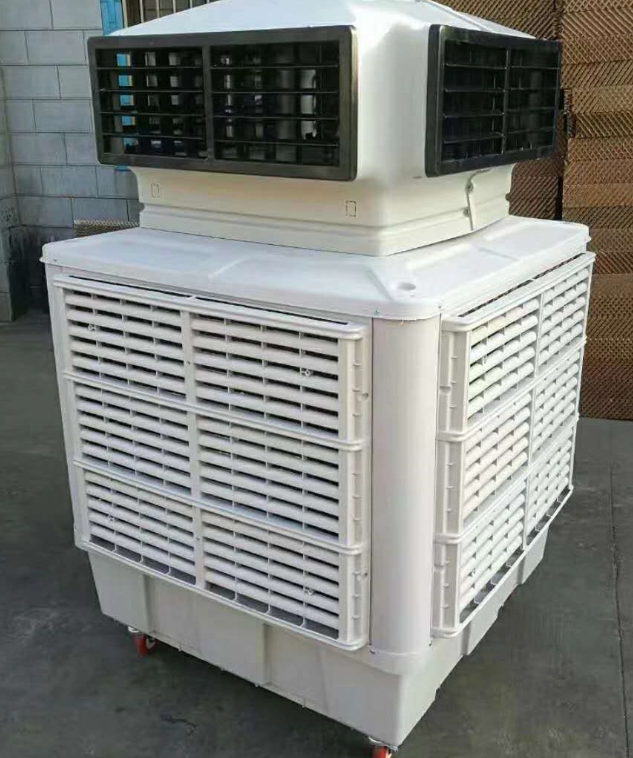Introduction
Greenhouses play a pivotal role in modern agriculture by providing a controlled environment for plant growth. Among the critical factors influencing greenhouse productivity, temperature and humidity management are paramount. Traditional cooling methods and farm cooling pads in greenhouse represent two distinct approaches to regulate these environmental factors. This article endeavors to dissect the key differences between these methodologies and their suitability in greenhouse applications.

Traditional Cooling Methods in Greenhouse Applications
Traditional cooling methods encompass a range of systems such as fans, ventilation, and shade structures. These methods rely on circulating air or manipulating sunlight penetration to moderate the internal greenhouse temperature. Fans facilitate air movement, aiding in heat dissipation, while ventilation systems regulate temperature by allowing the influx of cooler air or the expulsion of warm air.
However, traditional methods have limitations. They might struggle in providing consistent temperature control, especially during extreme weather conditions. Additionally, their reliance on electricity consumption could escalate operational costs.
Farm Cooling pads in greenhouse: Application in Greenhouse Environments
Farm cooling pads in greenhouse, also known as evaporative cooling pads, represent an innovative approach to temperature control in greenhouses. These pads leverage the principle of evaporative cooling, where air passes through wet pads, causing the evaporation of water and subsequently lowering the air temperature. This mechanism provides efficient cooling by utilizing the natural process of heat exchange.
In greenhouse settings, farm cooling pads in greenhouse offer a significant advantage by providing more uniform cooling throughout the structure. By maintaining consistent temperature and humidity levels, they create an optimal environment for various plant species, enhancing growth and yield.
Comparative Analysis: Key Differences Between Traditional Methods and Farm Cooling pads in greenhouse
- Energy Efficiency Comparison
Comparing energy efficiency reveals that farm cooling pads in greenhouse often consume less electricity than traditional methods. The evaporative process they employ requires less energy input, making them a more environmentally friendly and cost-effective choice, especially in areas with lower humidity.
- Cost-Effectiveness
While traditional methods might have lower initial costs, farm cooling pads in greenhouse showcase cost-effectiveness in the long run. Their operational expenses, primarily water and electricity usage, often translate to substantial savings compared to traditional systems.
- Maintaining Optimal Greenhouse Conditions
Farm cooling pads in greenhouse excel in maintaining consistent and desirable greenhouse conditions, providing precise control over temperature and humidity levels. This capability is crucial for the well-being and growth of sensitive crops.
- Environmental Impact
Farm cooling pads in greenhouse exhibit a reduced environmental impact compared to traditional methods due to their reliance on natural evaporation processes rather than solely on electricity consumption. Additionally, they align well with sustainable farming practices, consuming less energy and often utilizing recycled or renewable materials.
Factors Influencing Choice: Considerations for Greenhouse Owners
- Climate Considerations
The choice between traditional methods and farm cooling pads in greenhouse hinges on the prevailing climate. Farm cooling pads in greenhouse prove highly effective in dry and arid regions, whereas traditional methods might perform adequately in moderate climates.
- Maintenance Requirements
Maintenance demands for both systems differ. While traditional methods might require less frequent upkeep, farm cooling pads in greenhouse necessitate periodic cleaning and pad replacement. However, their overall maintenance costs are often lower.
- Scalability and Adaptability
Farm cooling pads in greenhouse demonstrate scalability, easily adapting to various greenhouse sizes and configurations. Conversely, traditional methods might encounter limitations in providing uniform cooling across larger greenhouse spaces.
Case Studies and Real-World Examples
- Success Stories of Traditional Cooling Methods
Several successful implementations of traditional cooling methods exist, especially in regions with moderate climates. Ventilation systems combined with shade structures have showcased efficiency in maintaining suitable greenhouse conditions.
- Efficacy and Benefits of Farm Cooling pads in greenhouse
Real-world examples exhibit the remarkable benefits of farm cooling pads in greenhouse. Greenhouse owners employing these pads have reported enhanced crop yields, better plant health, and reduced operational costs due to improved environmental control.
Future Trends and Advancements
The future of greenhouse cooling methods might witness advancements in both traditional systems and farm cooling pads in greenhouse. Innovations focusing on energy efficiency, automation, and integration with renewable energy sources could further revolutionize greenhouse climate management.
Conclusion
In conclusion, the comparison between traditional cooling methods and farm cooling pads in greenhouse underscores the advantages of each system in greenhouse applications. While traditional methods offer versatility, farm cooling pads in greenhouse excel in energy efficiency, precise environmental control, and long-term cost-effectiveness. The choice between these methods should align with specific greenhouse requirements and climatic conditions, ultimately aiming for sustainable and optimal crop production.
Related Products





